Hamamelis x intermedia 'Jelena'
Archive entry 12.01.14
Archive entry 21.12.14
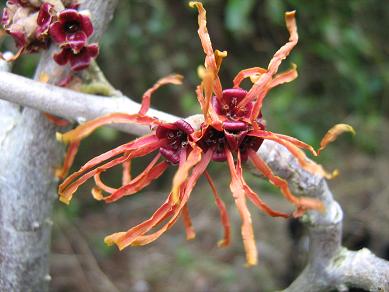
1st February 2009
A good orange form that I have just planted. It isn't strongly scented but the flowers stand out quite well.
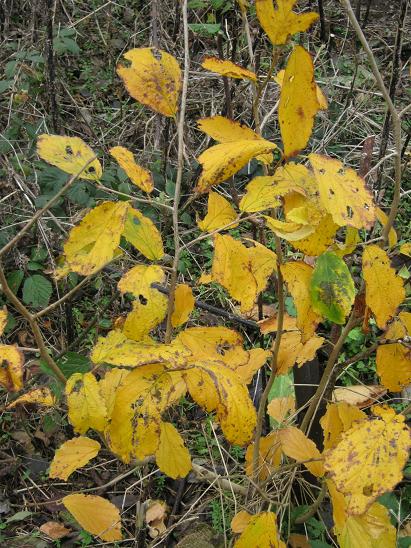
21st November 2010
This is a lot more than I was expecting in the way of autumn colour.
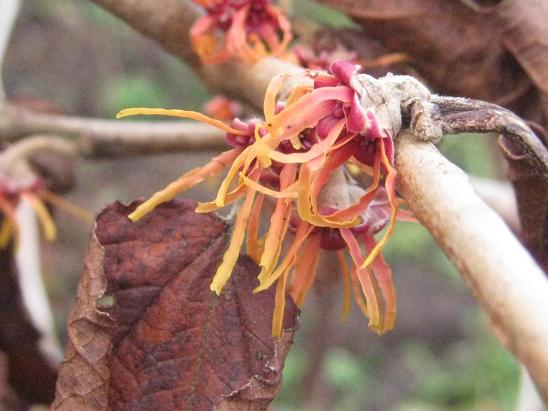
3rd January 2012
How damp the patch on yonder bottom lies (or something of the sort). I should have known better than to sit on a wet
log to take this picture. I still seem to be sitting on it as I write this, and I have changed my trousers once already.
It is wonderful beyond words to have delightful scented flowers through the worst months of winter. If low light
levels mean I have to sit down to steady the camera then a damp bottom is a small price to pay.
The hybrids between H.japonica and H.mollis have appeared from seed where the two species are grown together.
H.mollis was probably introduced from China in 1879 but the single surviving seedling grew at Veitch's Coombe Wood
Nursery unrecognised, and was not identified and distributed until 1898. It has long, yellow, straight edged petals
and is strongly scented.
H.japonica has been in cultivation in Europe since the latter part of the 19th century and a number of
naturally occurring variations have been named, including H.japonica flavopurpurascens with petals suffused with dark red.
In 1896 Antoine Kort took over the operation of a nursery at Kalmthout in Belgium originally founded by Charles Van Geert in 1856.
Kort had assembled a collection of
Hamamelis species and was raising seedlings. The nursery closed during the First World War but much of the original
stock of trees and shrubs continued to grow on the site. In 1952 Georges and Robert De Belder bought much of the original site
and started to restore it, joined in 1954 by Jelena Kovacic from Slovenia who later married Robert.
Hamamelis x intermedia 'Jelena' was found growing in a thicket of Kort's original plantings and
introduced to the trade. It is believed to be a seedling from a plant found on the site labelled H.japonica flavopurpurascens
from Kort's original collection of species. It inherits the red suffusion in the petals and the dark red interior of the calyx.
Named after Jelena De Belder, it produces seedlings freely and a number have been named and propagated ('Diane' was
named after the De Belder's daughter).
It is a good plant. I have not always been convinced of that, but its survival and popularity show how little heed need be taken
of my opinion. Survival in the horticultural trade is a fickle thing, it is very difficult to predict the plants that will
succeed. Plant Breeders Rights are evidence of the breeders confidence in their progeny but most disappear without
trace. The first flush of publicity just keeps on flushing until they are gone.
It is vigorous and it flowers freely. The flowers are fascinating when you are close to them. At a distance, the colour
is impossible to distinguish from the general woodland background. Possibly with the low sun shining through it
the effect would be more striking. If the flowers are brought indoors they are pleasantly scented but it is never
enough for me outside and I still believe that is a failing in a genus best known for scenting the winter garden.
I grow fonder of it with every passing year and once the emotional interest has been engaged it is easy to overlook
the few drawbacks but I have a feeling that one day someone will raise a seedling from it that will make it look
like cold gravy. It hasn't happened yet.
This is the first year that it has retained dead leaves through the winter. It is a habit that some shrubs and trees
have when they are juveniles. This plant was grafted using mature wood, and for the first few years dropped its
leaves as adults do. The reversion to juvenile growth is good news, it means the plant has established new roots
and is coming into vigorous growth. It will rush up to about six feet and then slow down and mature. I am pleased to
see that it continues to flower through that process (it flowers on second year wood so don't prune it too enthusiastically).
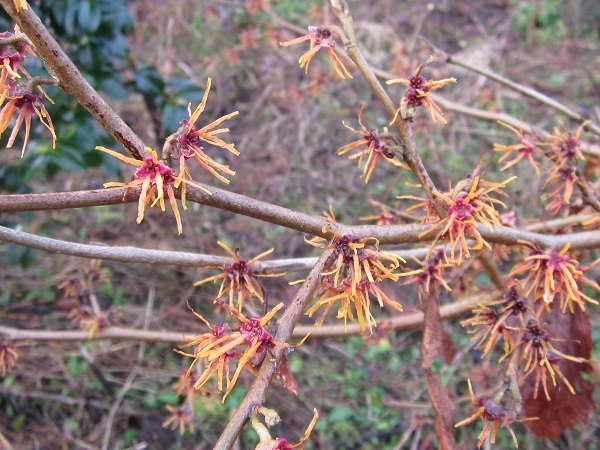
11th January 2013
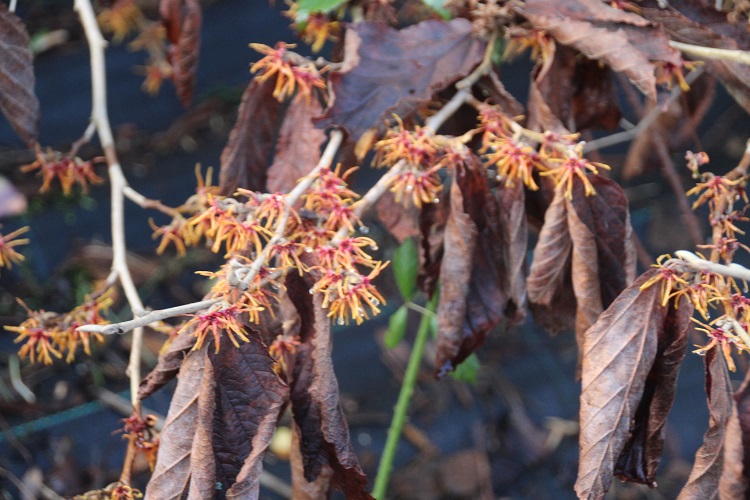
14th January 2018
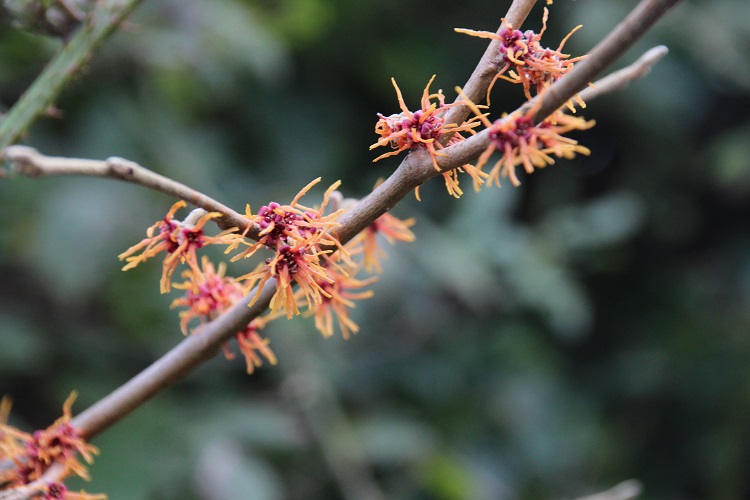
9th February 2021






